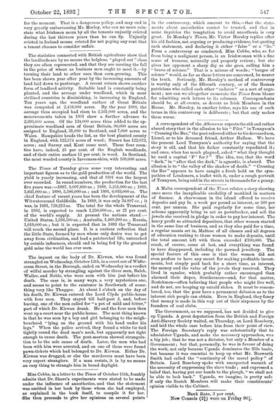The statistics connected with British agriculture show that the landlords
are by no means the helpless, "played out" class they are often represented, and that they are meeting the fall in the price of wheat as business men ought to meet it,'.-.by turning their land to other uses than corn-growing. This has been shown year after year by the increasing amounts of land laid down to pasturage. A recent return shows another form of landlord activity. Suitable land is constantly being planted, and the acreage under woodland, which in most civilised countries is diminishing, is increasing in England. Ten years ago, the woodland surface of Great Britain was computed at 2,458,000 acres. By the year 1888, the acreage thus occupied had risen to 2,561,000 acres, and the measurements taken in 1891 show a further advance to 2,695,000 acres. Of the 134,000 acres thus added to the ap- proximate woodland area of Great Britain, 96,000 acres are assigned to England, 31,000 to Scotland, and 7,000 acres to Wales. Hampshire heads the list, as the best planted county in England, with 122,574 acres of wood ; Sussex has 122,073, acres ; and Surrey and Kent come next. These four coun- ties have, indeed, 25 per cent. of the English woodlands, and of their entire surface 11 per cent, is wood. In Scotland, the most wooded county is Inverness-shire, with 169,000 acres.






































 Previous page
Previous page